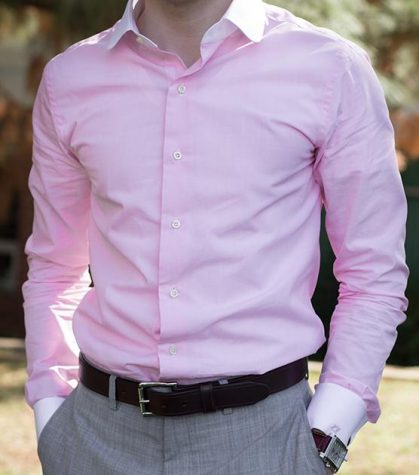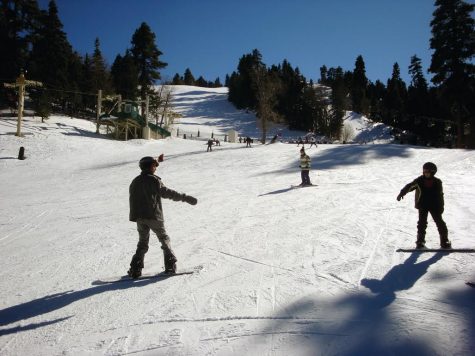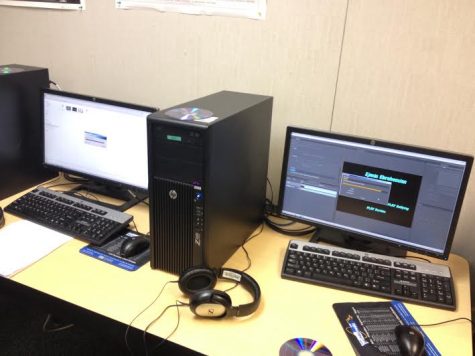Autism and the Child
“They were all so young and little,” said senior Nora Oghlian. “They had their entire lives ahead of them; I saw them in their own classroom learning the way they do.”
Oghlian has focused her senior project on her experience in working in the special education program at Lincoln Elementary School. She has spent two months observing children with disabilities, most notably children with autism.
“It’s one of the most rewarding things I ever did for myself,” she said, “mostly because it made me see what it was like to be different.
Oghlian also said that the kids all have something special about them, and they all try to do well. It’s just harder for children with autism to understand brand new concepts.
Autism is very real and very present. The senses of an autistic child are out of sync with each other and out of sync with the child himself.
According to Autism Speaks, Autism Spectrum Disorder affects nearly one in 88 children in America. This number has increased as much as ten times over the last 40 years.
Autism Spectrum Disorder, or ASD, is the general, umbrella term used for a group of disorders all associated with defects in brain development. The spectrum is comprised of several disorders; they are are characterized by their effects on social interaction and nonverbal and verbal communication. Moreover, there is a segment of the spectrum that is characterized by behavioral repetitions or rituals.
ASD manifests itself in intellectual, motor and physical disabilities. Children with an ASD can also experience problems with their sleeping schedules, an effect of the physical disabling the disorder does.
Gayane Ormanjian, now a preschool teacher at Gaya’s School House in La Cañada and specialist in early childhood education, conducted fieldwork at the St. Kliment Ohridski Institute’s child development department. “I was able to to observe kids with notable disabilities, but for the most part, I found myself most interested with the kids with autism,” she said.
Ormanjian said that each child possessed different characteristics. “Some of them were so quiet and almost detached from the rest of the world,” she said. “At the same time, there were other kids around them running and jumping down uncontrollably.”
Ormanjian saw similarities in her experiences when compared to the Diagnostic Manual for autism, which states that “Children with autism typically have difficulties in pretend play and social interaction.” Her observations also showed evidence of a very unchildlike property of children affected by ASD: a lack of interest in any type of activity.
“Even the ones who were jumping and running weren’t necessarily doing it for fun, and I could tell,” she said. “It looked like they were doing it to relieve stress. They had what appeared to be a never ending flow of anxiety.”
Ormanjian noted that “the kids feel trapped and they literally interpret the world so much differently than we do.” Many children with autism have acute hearing and even a slight difference in the volume of anything can trigger a meltdown. “There are so many kids who are bothered by bright lights or fast moving objects because they process it in a much more complicated way than we do. They can very easily get overloaded with all these senses going to work at the same time.”
Although children with autism have some setbacks when it comes to what the world considers normal, an overwhelming number of them have added abilities that can perhaps make up for the problems they face.
Although children with autism have some setbacks when it comes to what the world considers normal, an overwhelming number of them have added abilities that can perhaps make up for the problems they face.
“There was a kid who was very antisocial, I remember,” Oghlian said. “But when someone gave him paint and paper or markers it was like he opened up. He still didn’t speak to me, but he drew and colored so fervently.” Oghlian said that sometimes children with ASD find solace in art, because it gives them a way to express themselves comfortably.
Other forms of added abilities include excelling in math, visual arts and music. Many children find these as ways to concentrate their energy and see the product of their concentration.
With music, it is understandable that they can control how loud they play their instrument, how fast and for how long. As a result, this makes the transition from the previous activity to their chosen activity exponentially easier.
Math is also a very common academic subject that is excelled in by individuals with Autism Spectrum Disorder. It has been shown through studies conducted over the past few years that autistic children use a different part of the brain to do the math problems. Thus, the way they analyze and find the answer is totally different from children without autism.
In a study conducted by Stanford University Medical School, the students who did better on the standardized math exams were the autistic children. According to the experiment’s data, the brain organization of an autistic child is totally different from that of a non-autistic child. The autistic child’s brain used the region devoted to recognizing objects when solving the math problems. This is probably why they had an easier time solving them successfully. Additionally, they were less likely to rely on memory or use their fingers to count. The autistic children revealed in an interview that they broke the problem down and solved it separately.
Jacquie Nelson, the special education teacher here at Clark, has been working with disabled children for 14 years and has worked with many children with autism.
When asked about the key differences between Asperger’s Syndrome and autism, she clarified that “there are no common behaviors for either, it’s a spectrum. Each student is different.” However, Nelson did say that some of the more common symptoms she’s seen include having trouble communicating with their friends and engaging in social activities. “These are still not across the board for every student with Asperger’s or autism.”
Nelson said that treatment for autistic children isn’t exactly treatment, in the traditional sense. “There is no treating, it’s not like a disease,” she said. “Their brains are just different. It should be understood that the majority of people with autism have the ability to learn. You just have to find the thing that gets through to them.”
Nelson also said that “there are a lot of brilliant people with diagnoses of autism or on the autism spectrum.” She capitalized on the fact that autism is “not necessarily a debilitating disability” and that “students with high-functioning autism are fairly brilliant.”
Therapy for autism is a widely used form of intervention. Nelson said that “there are many different types of therapy. There is therapy from assistive technologies to physical therapy, occupational therapy, mobility therapies — how to get around town. It really is determined case by case; there’s no set way to ‘treat’ someone diagnosed with autism. It depends on their individual needs.
“Just because someone has a diagnosis, doesn’t mean they can’t learn or be successful,” Nelson said.
Children with autism are just children. “They’re not much different from you or I. They just think a little bit differently,” Nelson said.

INTERESTS/HOBBIES: Avoiding all responsibilities and collecting religious figurines
EXTRACURRICULAR ACTIVITIES: Eating, sleeping and drifting in my...














